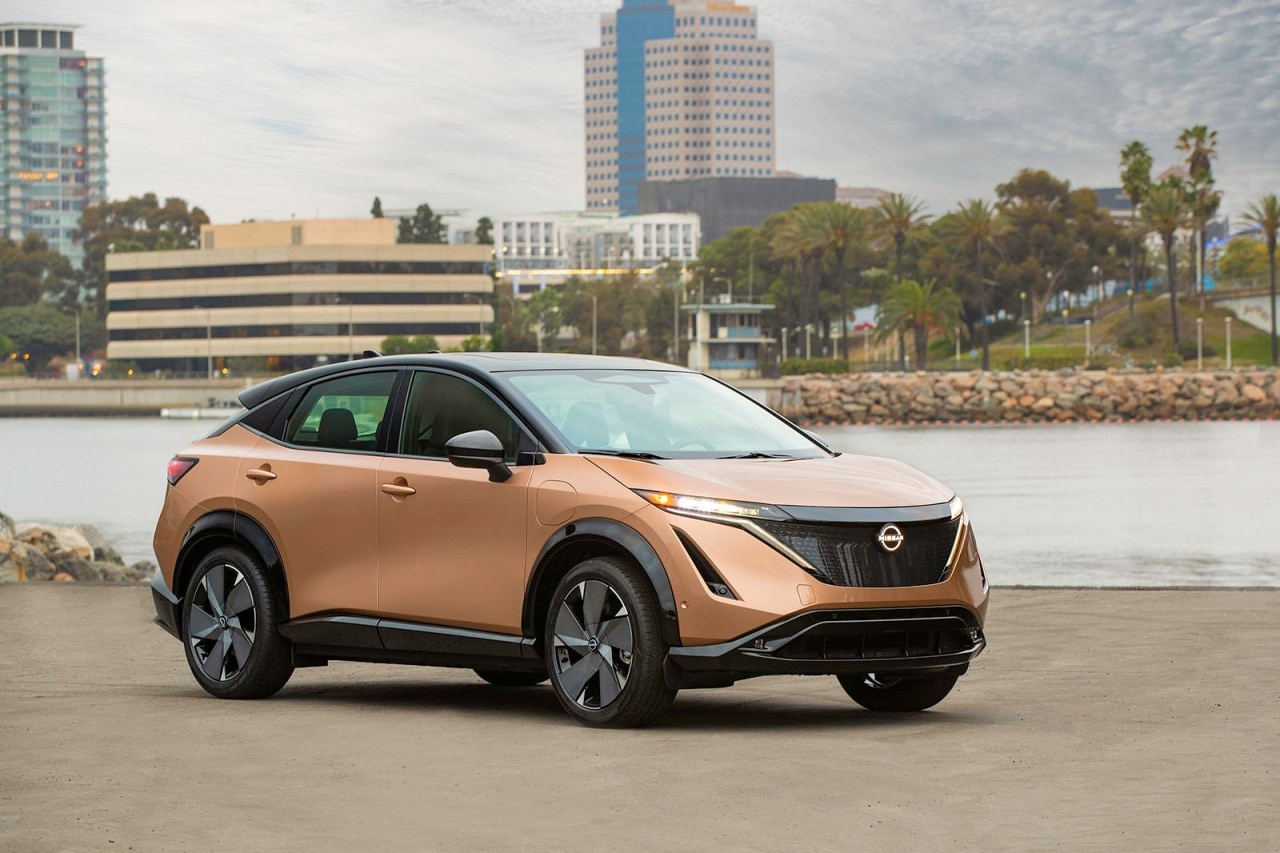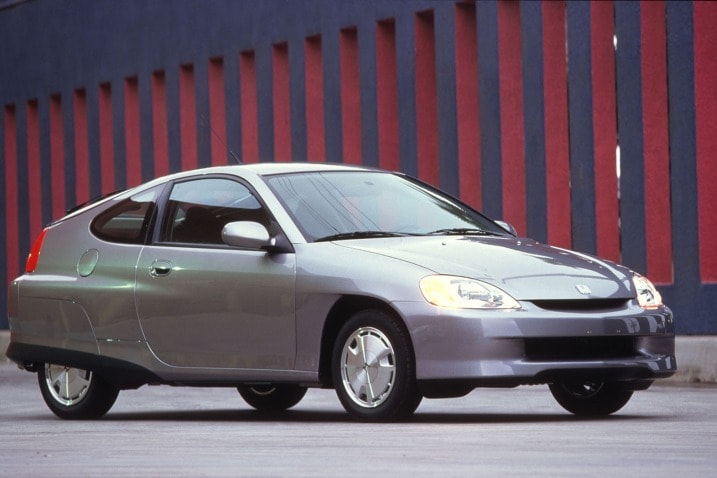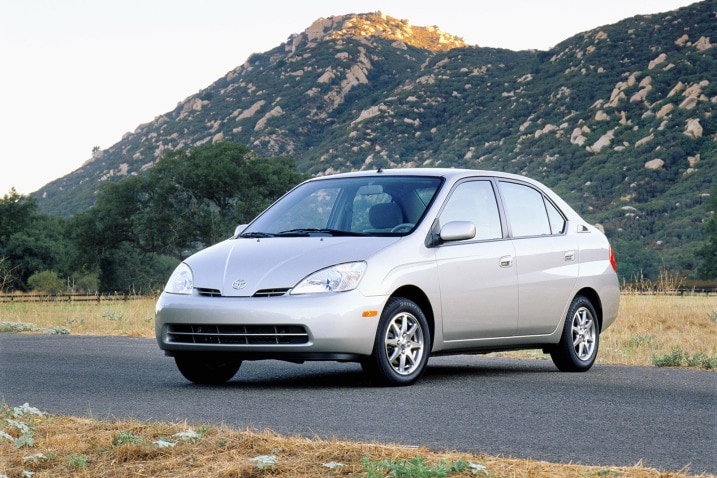- Due later this year, the Nissan Ariya is an electric SUV that will give Nissan the jump on Toyota and Honda's eventual EVs.
- A reluctance to commit to electric vehicles leaves Toyota and Honda scrambling to catch up.
2022 Nissan Ariya Will Have a Head Start on Toyota and Honda
Honda and Toyota will have to play catch-up to Nissan Ariya
Despite being pioneering companies for hybrid vehicles, Toyota and Honda have been curiously slow to jump into the EV waters. Toyota's first long-range electric vehicle is still at least a year away, and the Honda Prologue — Honda's follow-up to the poorly received Clarity Electric — isn't due until 2024.
Meanwhile, Nissan has already released two generations of its Leaf electric hatchback, and is on the cusp of debuting the 2022 Nissan Ariya — a long-range electric crossover small SUV. Due later this year or early next, the Ariya will extend Nissan's lead in the EV realm even further. By the time their gas-free vehicles launch, Toyota and Honda will have to make up serious ground to catch up to not only Nissan but dozens of other EV trailblazers. How did two early adopters of electrification get here?
A promising start ...
Am I Ready for an EV?
- EV ownership works best if you can charge at home (240V outlet) This typically means a 240V home installation, or other places your car is parked for several hours each day. Don't expect a regular household outlet (120V) to suffice.
- Adding a home charging system is estimated to cost $1,616 in This is an estimate for your area. Using your address and the answers you provide, Treehouse can provide a more accurate price.
- Edmunds is partnering with Treehouse, an independent provider of home EV installation services. Learn more Edmunds customers receive a 10% installation discount and 4% smart charger discount. Discount excludes permit, hosted inspection, and load management devices. Valid for 30 days.
The first-generation Honda Insight and Toyota Prius were undeniably groundbreaking. The 2000 Insight was first to the U.S. market. It had two seats for reduced weight, a Kammback rear end and covered rear wheels for improved aero, and a manual transmission. (Fun fact: Honda is the only manufacturer to ever fit a manual to a hybrid powertrain. And it did it with three cars, the others being the Civic Hybrid and CR-Z). The EPA rated the early Insight at 53 mpg in the combined cycle — the next most miserly car was the diesel-powered Volkswagen Golf, at 38 mpg combined.
The benefit to going electric, or at least electrified, was clear. At 41 mpg combined, the following year's Toyota Prius wasn't nearly as efficient, but it proved to be more popular. This wasn't surprising since the Prius seated up to five people and its automatic transmission was more city-friendly than the Insight's manual. The second-generation Prius found even more fans, eventually becoming a cultural phenomenon. It attracted holier-than-thou eco-warriors and drew ire from coal-rolling truck bros and hacky comedians alike.
That was ultimately squandered ...
The third-generation Prius family expanded to include the Prius C small hatchback and the Prius V wagon. Those body styles were discontinued when the fourth Prius rolled around, but the ubiquitous hatch was joined by the Prius Prime plug-in hybrid. Honda eventually introduced second- and third-generation models of the Insight — the latter is currently our favorite hybrid on the market.
But both manufacturers took a cautious approach when it came to developing a more intensive electrification strategy. Instead, Toyota and Honda put big bets on hydrogen as the fuel of the future. Honda fired the first salvo with the FCX Clarity, which gave way to today's Honda Clarity in 2017. Toyota also got in on the action, releasing the first Mirai in 2016 and its successor in 2021. Both manufacturers looked to hydrogen after identifying the limitations of today's electric vehicles — namely, slow charging while on the road and a lack of solutions for shoppers for whom home charging is not an option.
But hydrogen infrastructure is even less developed. The FCX Clarity debuted over a decade ago, and even with the new Clarity, Mirai and Hyundai Nexo, today there are only about 50 stations nationwide, mostly centered in the San Francisco and Los Angeles metropolitan areas. It's too early to tell if the hydrogen experiment has failed, but it certainly has a long way to go before widespread adoption.
Leaving the door open for Nissan and others
While Toyota and Honda were tinkering with their first hybrid hatchbacks, Nissan quietly released the Altra electric minivan to utility fleets. Although only about 200 were produced, Nissan used its findings to create the first mass-market EV, the Leaf, in 2011. The Leaf could deliver up to 73 miles of driving range on a full charge, which really only made it appropriate for running errands around town. It sold a respectable number of units its first few years. But then an upstart from California changed the game forever.
The Tesla Model S luxury sedan blew the doors open and showed the public what electric cars could do. Perception of EVs seemingly changed overnight. EVs were no longer oversized golf carts, but long-range missiles that could outrun all but the most exotic supercars in a drag race. Sales for EVs such as the Leaf exploded (not everyone can afford a six-figure Tesla, after all), and established manufacturers began to reevaluate their long-term strategies. Most settled on full electrification — a conclusion that is just now bearing fruit with well-regarded EVs produced by everyone from Kia to Porsche. Electric SUVs like the Nissan Ariya are the next frontier; we've already seen strong interest in crossovers such as the Ford Mustang Mach-E and Volkswagen ID.4.
So where does that leave Toyota and Honda? Playing a costly game of catch-up. The gamble on hydrogen tied up resources that could have been spent fighting Tesla, Nissan, Chevrolet and others years ago. Toyota did produce two generations of an electric RAV4, but it abandoned the project after the 2014 model year — right as demand for EVs started to pick up. Toyota's first long-range electric vehicle is previewed by the bZ4X Concept. A production model will be released next year.
Honda is even further behind. The automaker's only EV to date has been a fully electric version of the Clarity, but its paltry 89-mile range won few converts. Honda's first long-range EV, the Prologue, is being developed in partnership with General Motors and won't go on sale until 2024.
Edmunds says
Toyota and Honda are late to the EV game, leaving the door wide open for vehicles like the 2022 Nissan Ariya to gain a foothold in the marketplace.








 by
by